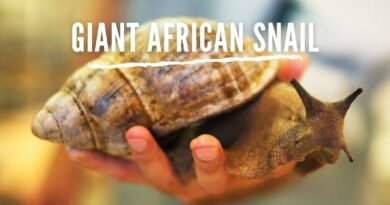How to handle your pet dog’s estrus or heat cycle
The pet dog’s heat cycle has become a common worry of owners. Many dog guardians want to prevent or optimize breeding in female dogs.
Pet dog owners always remain perplexed about this long-debated question- what’s the safest way to manipulate the dog’s estrus/heat cycle. Over the years, studies have found multiple treatments to ensure the well-being of pets like dogs, hamsters, guinea pigs, and cats.
Unfortunately, most dog pet owners are still unaware of all the possible treatments for estrus manipulation -their advantages, side effects, and safety measures. But thanks to Dr. Cindy Maenhoudt, Natalia R. Santos, and Alain Fontbonne who explained all the recently used treatments to manipulate a dog’s estrus cycles in one single research. All pet owners could now better understand different methods and take their pick.
In a 2018 study, Dr. Cindy and her fellow researchers reviewed the literature to study all the manipulation methods for the dog’s estrous cycle. The review study itself was featured online in the journal called Reproduction in Domestic Animals, volume 53, issue S3 on 25 November 2018. The journal publishes original papers and reviews articles concerning pathology, physiology, and biotechnology of reproduction.
But before taking a review of what Dr. Cindly and her research team believe are the best options for dog’s heat cycle manipulation, let’s first briefly study the estrous cycle of female dogs. Typically speaking, a female dog will have her first estrus or heat cycle between the age of 6 to 12 months depending on her size and breed. The stages of the estrous cycle are:
- PROESTRUS:
Proestrus is the time when you notice bloodstains either on your dog’s legs or around her resting areas. Proestrus is the stage when your dog is rich with hormones that attract the male dogs. During this stage, the estrogen levels will be high and follicles will develop. Proestrus is the time where people usually say “your dog is in heat”. This stage can last from 0-24 days with an average of 9 days depending on the dog breed and health.
- ESTRUS:
With enlarged but softened vulva and increasing progesterone levels, estrus is the stage where females are ready for male attention. During this stage, there will be a decrease in the blood flow and estrogen levels. Estrous is the stage where any canine female is fertile and ready for the possible breeding process. Estrus can last from 4-24 days with an average of 9 days depending on the dog breed and health.
- DIESTRUS:
With decreasing estrogen and increasing progesterone levels, diestrus is the stage where females are no more receptive to male attention. Over the end of this stage, progesterone levels decline to basal levels after reaching high peaks in the first half of this stage.
- ANESTRUS:
If not pregnant, anestrus is the stage where the body prepares for the next possible heat cycle. During this stage, the body of your female dogs gets back to normal conditions; no swollen vulva or vaginal discharge. Anestrus can last for 4-6 months depending on the dog breed and health.
Dr. Cindy Maenhoudt and Dr. Alain Fontbonne are veterinarian researchers at the Center for Studies in Carnivore Reproduction (CERCA), National Veterinary School of Alfort, Paris, France – and Dr. Natalia R. Santos is a veterinarian researcher from the Animal Husbandry and Sports Medicine Unit (UMES), National Veterinary School of Alfort, Paris, France.
Contraceptive options and side effects:
Dr. Cindy and her team thoroughly reviewed all the contraceptive options and their side effects. She elaborately unfolds multiple contraceptive alternatives like Progestins, Androgens, Deslorelin implants, and some other options.
The team of researchers also shed light on all the proven side effects associated with each contraceptive method.
“Several side effects associated with the use of progestins” and the spectrum of side effects is related to many factors, wrote Dr. Cindy in the review study.
The side effects of contraceptives are related to the product, medicinal dose, stage of the estrous cycle in which the drug is consumed, and the frequency of consumption. Among the several side effects of contraceptives, a few are behavioral changes, lethargy, weight gain, pyometra complex, mammary gland enlargement, neoplasia, acromegaly, or adrenocortical suppression.
Oestrous induction options and side effects:
The researchers also explained more advanced treatments i.e, estrus induction options. According to researchers, estrus induction in female pet dogs can be performed by either using dopamine agonists (anti-prolactinergic drugs like cabergoline and bromocriptine) or deslorelin implant (GnRH agonists).
To perform estrus induction successfully, your pet dog must be at least 5 months from the previous estrus, have normal ovarian and uterine functions, and is sexually matured.
Side effects of estrus induction are occasionally observed during the treatment and some of them may include vomiting, changes in the coat color, unexpected pregnancy, or, in some rare cases, coat shedding.
“Before estrus induction, it is crucial to confirm that the female pet dog is in anestrus” and also perform an ultrasound examination to estimate ovaries and uterus condition, state the research team.




